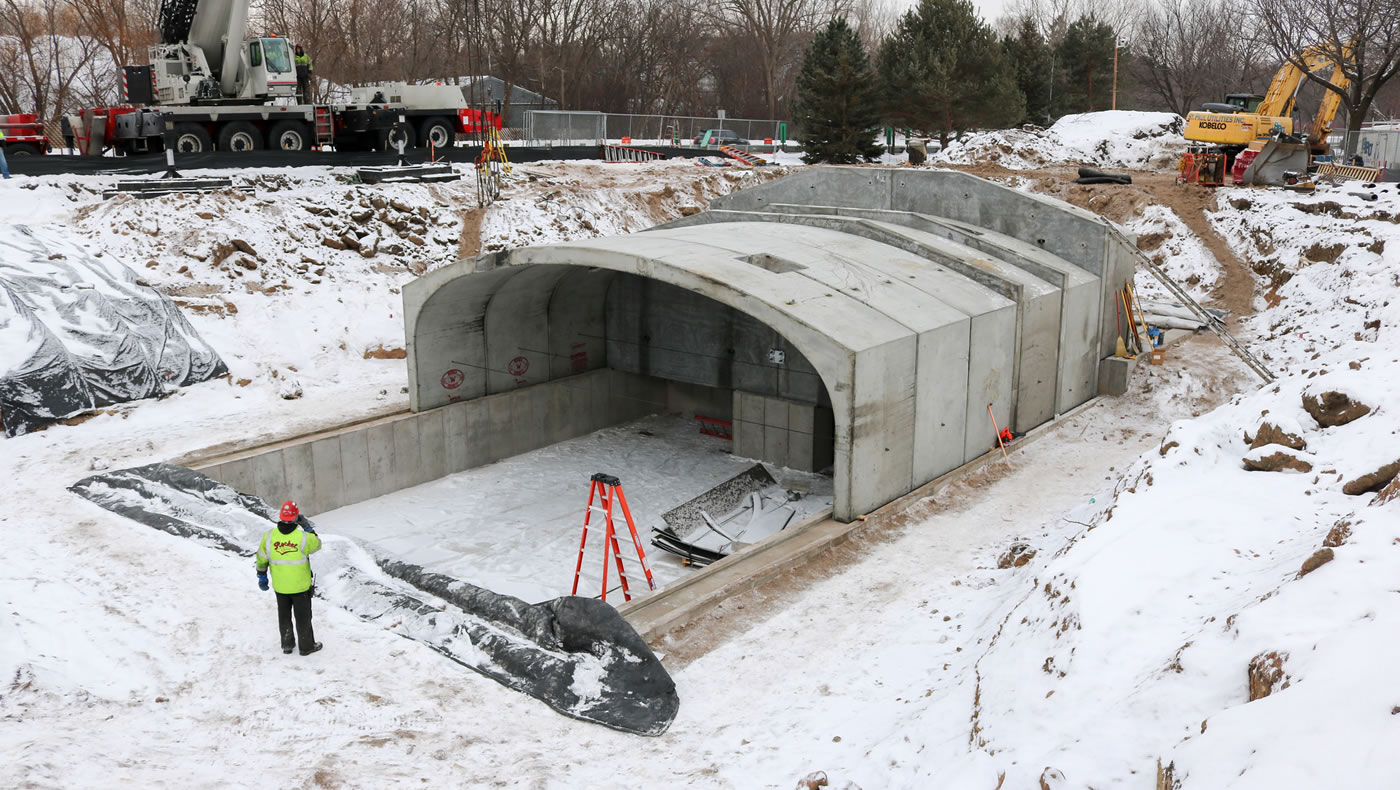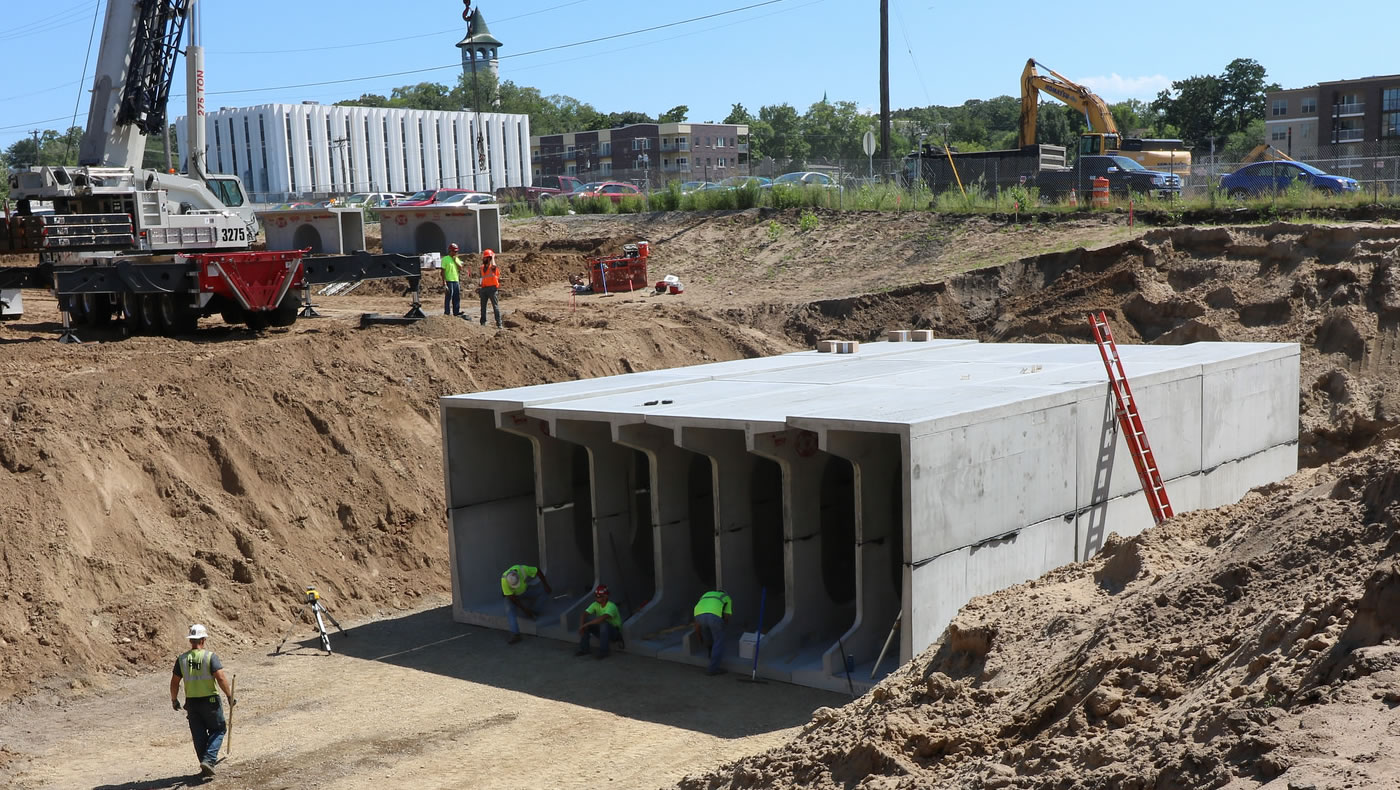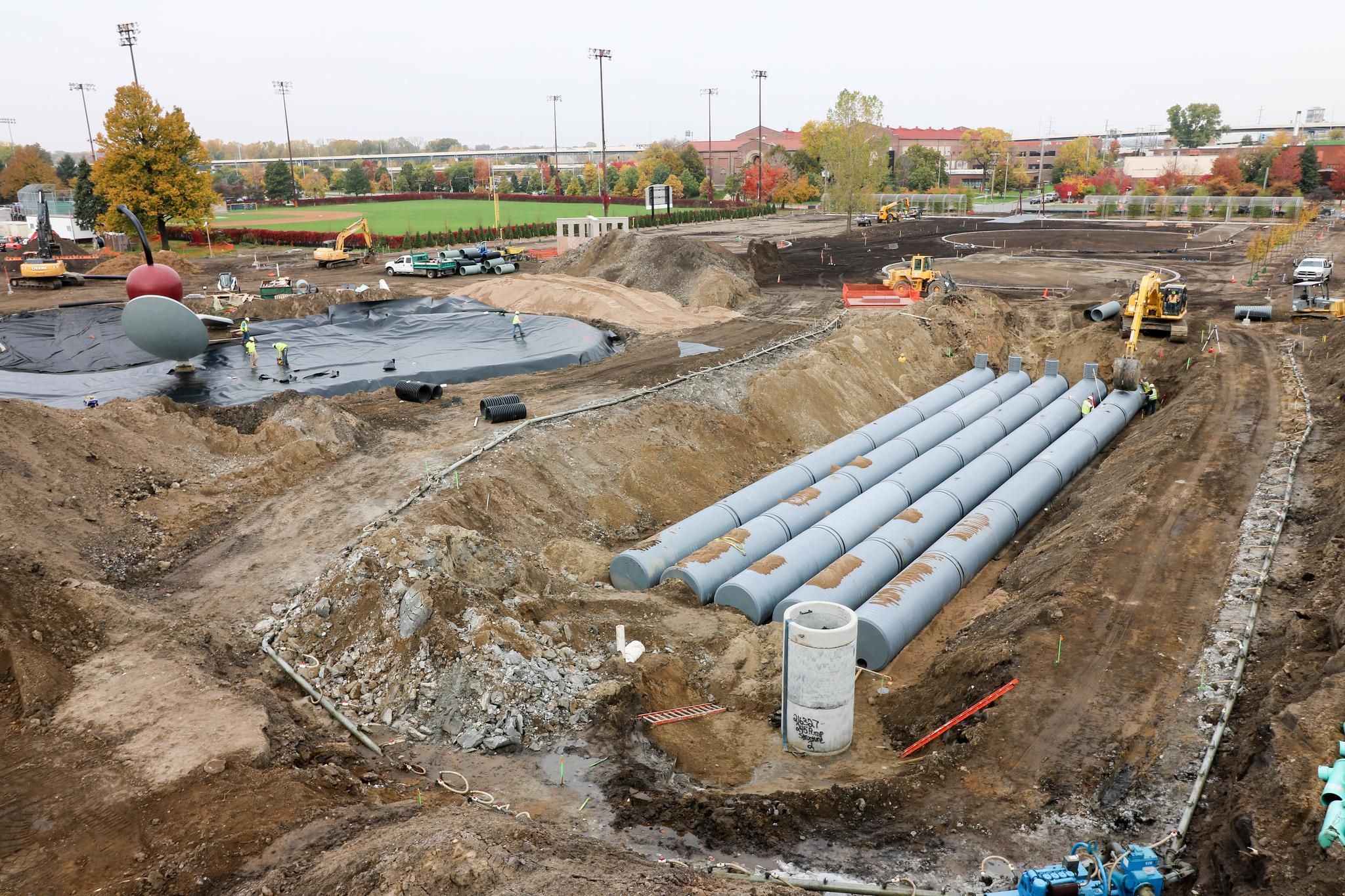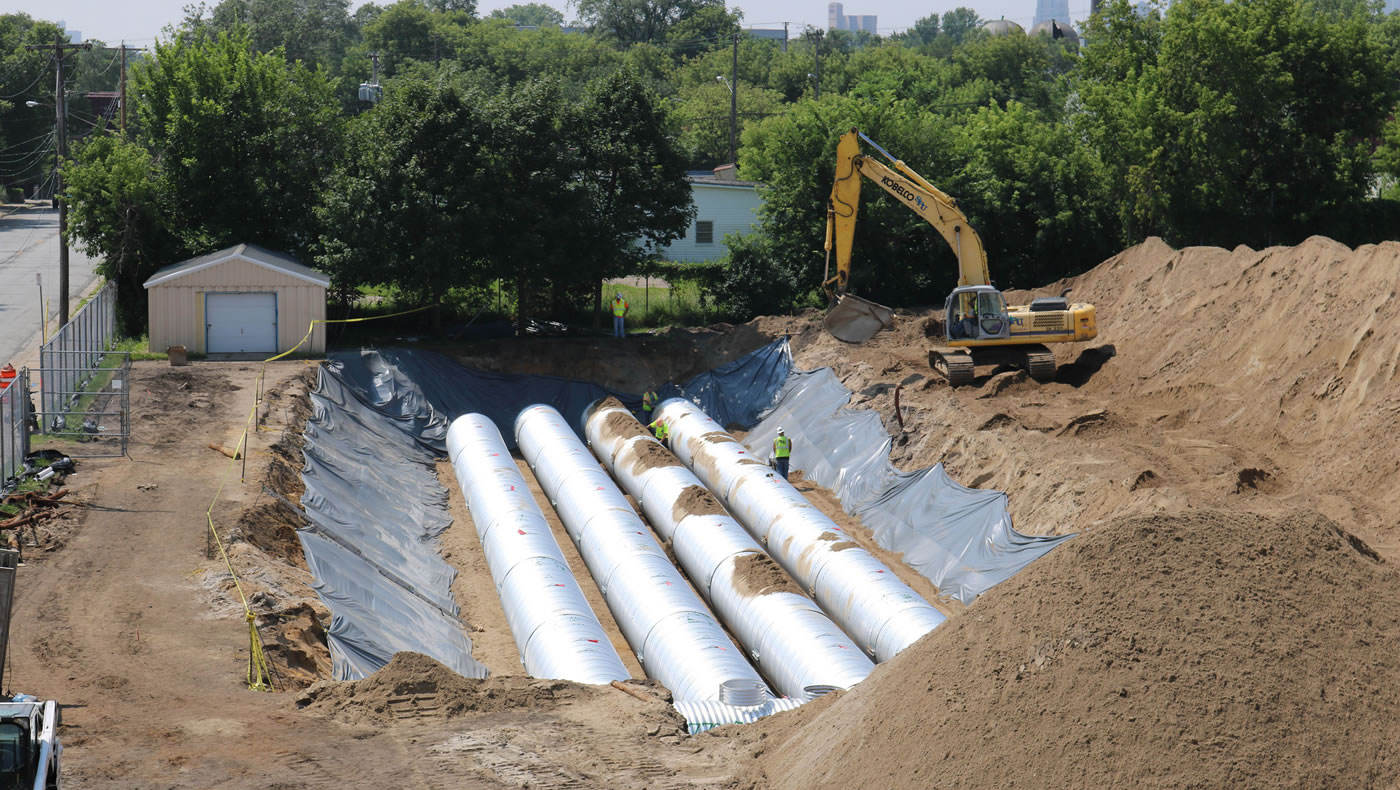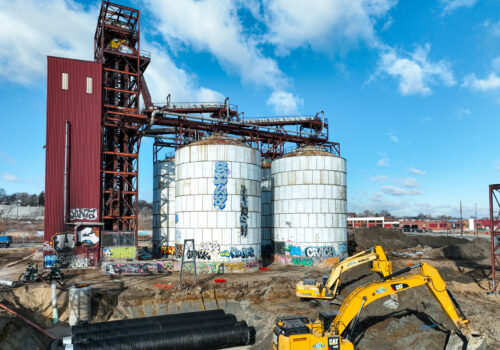News / June 26, 2017
How big is your stormwater reuse tank?

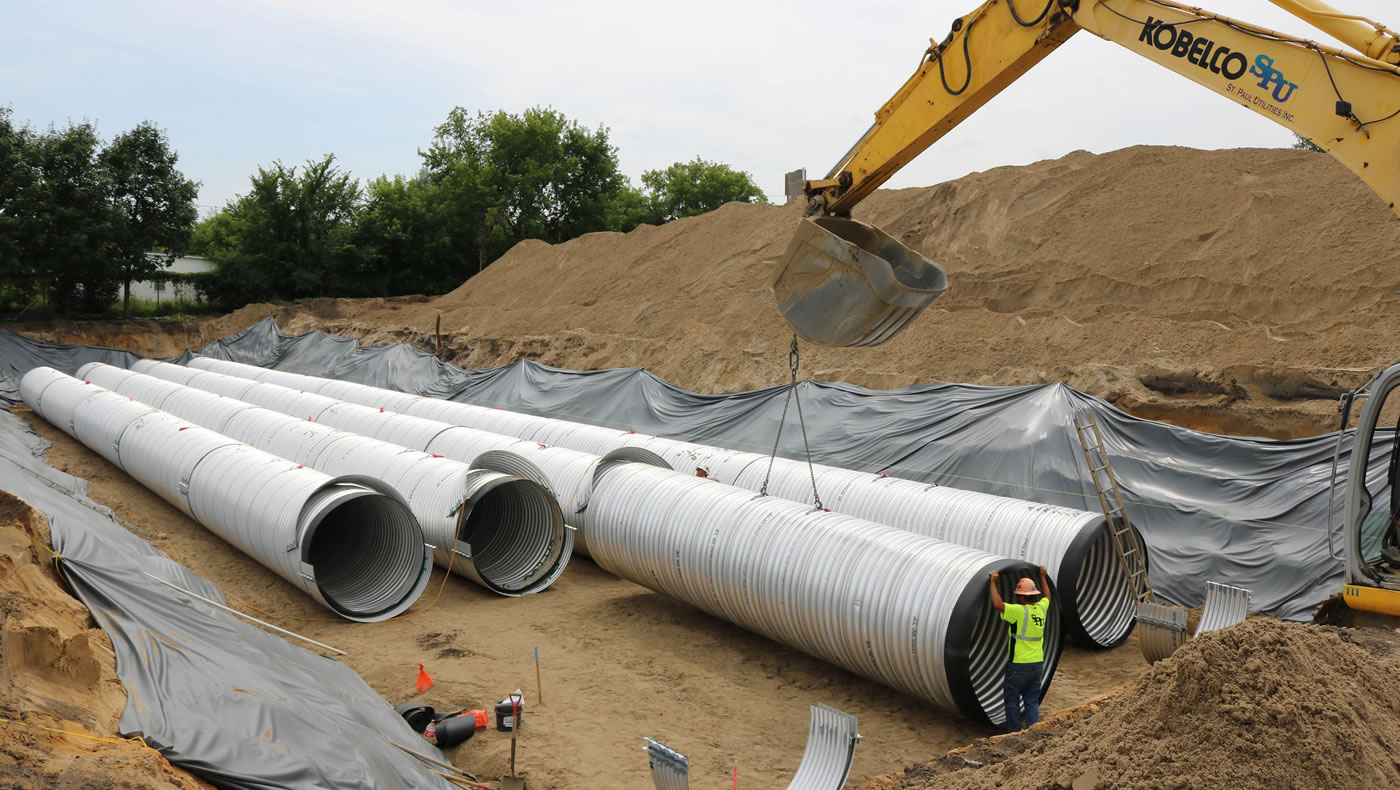
At the MWMO, we partner with organizations to build a variety of infrastructure to manage stormwater. We often utilize above-ground green infrastructure as a visible way to clean the stormwater, but one feature that is becoming increasingly popular is neither green nor visible: underground water storage tanks.
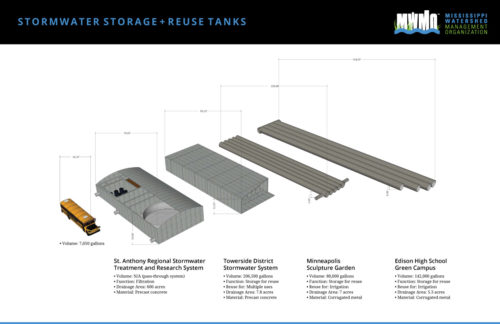
The trend toward water storage is focused around reuse. How can we capture the water that falls on a site and reuse it for something, instead of sending it to the Mississippi River? In several of our recent projects, large underground tanks hold stormwater to reuse for irrigation. One example is the newly reopened Minneapolis Sculpture Garden, which captures overflow from the Spoonbridge and Cherry fountain in an 80,000-gallon corrugated metal pipe cistern — enough to irrigate the entire garden as well as the baseball field next door. A similar system at Thomas Edison High School captures stormwater runoff from the gym roof and adjacent plaza, capturing it in a 142,000-gallon pipe gallery as a source to irrigate its athletic field.
At Towerside, the MSP Innovation District, the Towerside District Stormwater System includes a pair of biofiltration basins that drain into a storage tank assembled from precast concrete sections. In spite of its relatively small footprint, this tank is actually the largest and deepest of our recent projects, holding more than 200,000 gallons. As the area redevelops, this reservoir of captured stormwater could be put to all kinds of innovative uses. It will be exciting to see how this forward-thinking area of town uses this new water resource.
Meanwhile, our St. Anthony Regional Stormwater Treatment and Research System represents a similarly sized underground facility. The chief difference between this and the other three systems is that it doesn’t actually store stormwater; rather, it is designed as a pass-through facility that cleans stormwater before sending it to the river. However, it was constructed using a similar process, which you can see in a time-lapse video on YouTube.
Available in various materials, customizable to your drainage area and site constraints, these tanks provide a great option to treat stormwater as a resource and reuse it on your site. We will keep tabs on the efficiencies of the various systems we have in place and use that information to help us make decisions about future projects.
